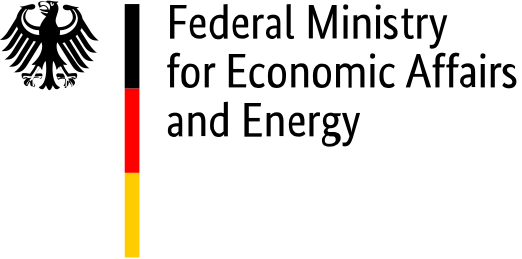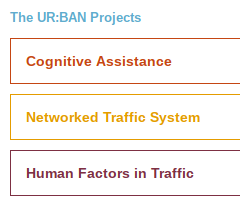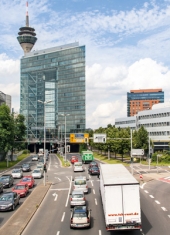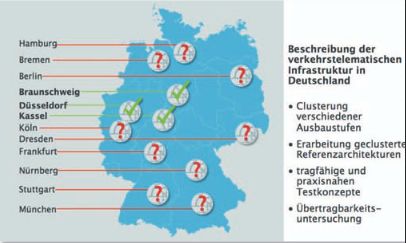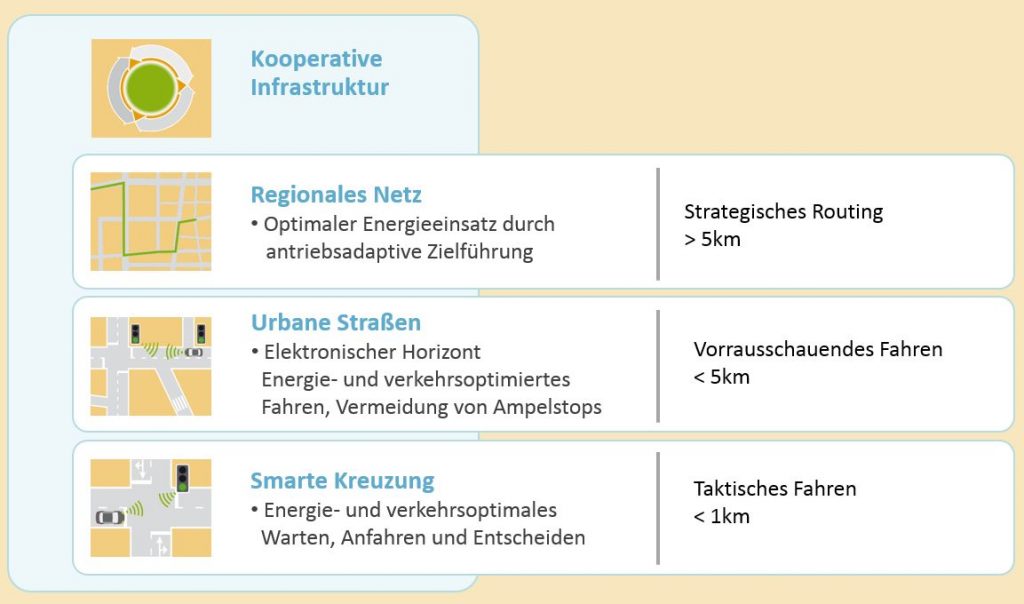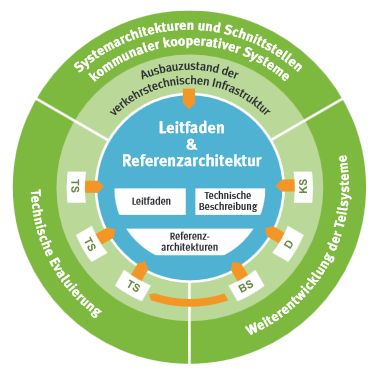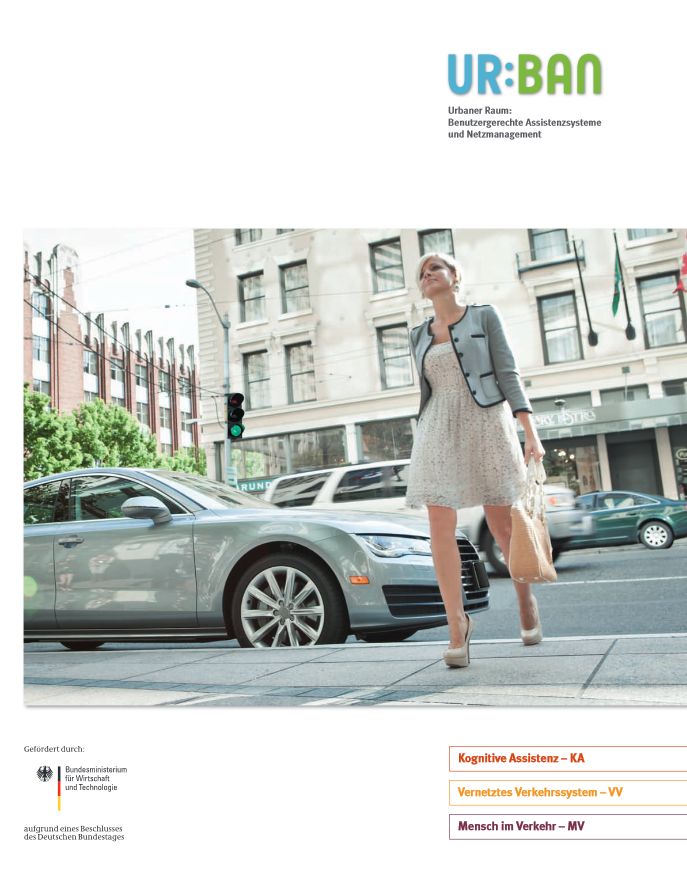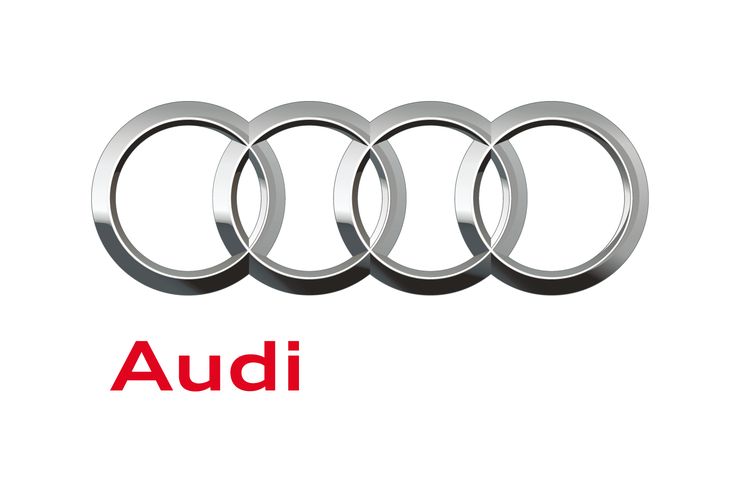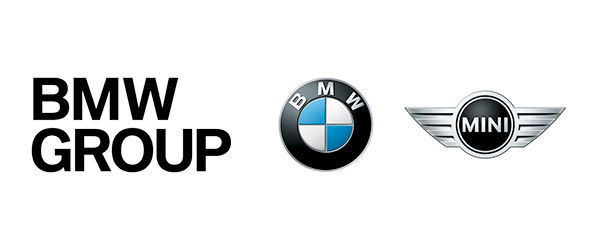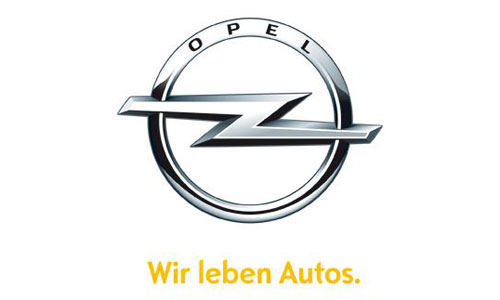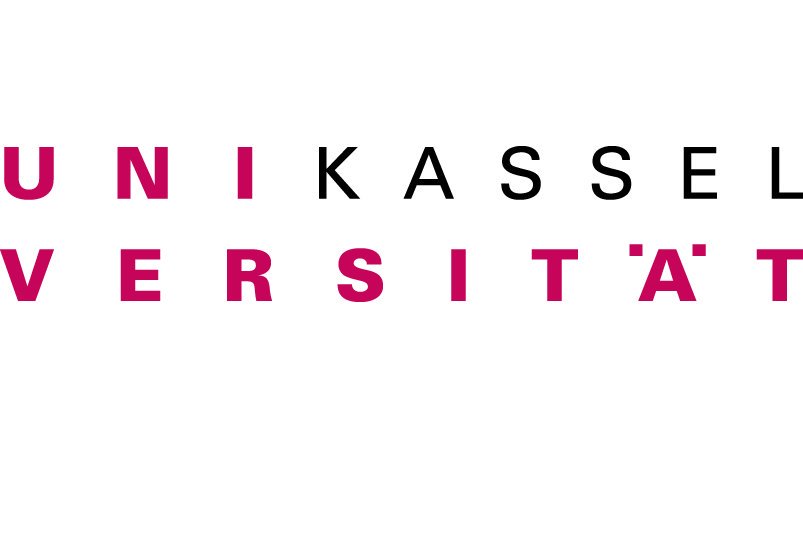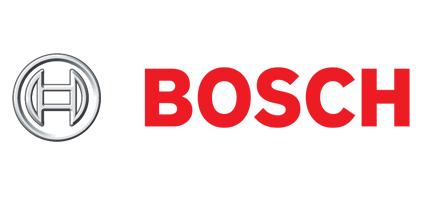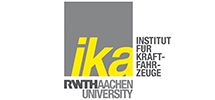UR:BAN (2012-2015)
The research initiative for urban transport
Thirty partners from the automotive and supplier industries, electronics, communications and software companies, universities and research institutes and cities have joined in the UR: BAN project to develop driver assistance and traffic management systems for the city. At the center of the considerations is the human being in his manifold roles in the transport system.
The research tasks are handled in three subject areas:
Safety in the city
New technologies allow today to realize a comprehensive perception of the complex traffic with panoramic view in the city. In addition, in UR: BAN also pedestrians and cyclists are considered with their movement behavior. The driver is continuously supported in complex inner-city traffic situations such as bottlenecks, oncoming traffic and lane changes, collisions are avoided by automatic avoidance and braking.
Driving economically and energy-efficiently
New information and communication options such as GPS / Galileo, UMTS / LTE and C2X enable new ways of cooperative traffic management in cities. By setting up and expanding intelligent infrastructure and networking with intelligent vehicles, innovative driver assistance systems will be able to directly take measures or recommendations from strategic traffic management in the future. In this way, it is possible to consider the different drive systems of modern vehicles such as electric and hybrid drives in the management of traffic flows. The objectives are to optimize traffic efficiency, avoid congested roads and reduce emissions in urban areas.
Foresighted and stress-free driving
The new assistance systems will provide the driver with relevant information in complex traffic situations. However, this must not lead to information overload. Therefore, overburdened or inattentive drivers are recognized by the new systems and adequately supported. Through appropriate design of controls and displays, the driver can be informed much earlier and be motivated to a forward-looking driving style, so that the ride in the city can be done safely, efficiently and relaxed.
The research initiative UR:BAN is one of the winners of the nationwide competition “Excellent Places in the Land of Ideas” 2013/14. The competition was dedicated to the topic “Ideas take place”. The initiative “Germany – Land of Ideas” and Deutsche Bank honor ideas and projects that provide solutions to the challenges of the cities and regions of tomorrow. UR: BAN (Urban Space: User-Friendly Assistance Systems and Network Management) will help improve the performance of existing transport infrastructure. The intelligent combination of vehicle and infrastructure will unlock the potential for more safety, capacity and better traffic flow. Supported by the Federal Ministry of Economics and Technology, UR: BAN has created a powerful combination of German researchers from industry and science. Part of the project work is to be able to quickly implement the traffic solutions developed in the test fields of the cities of Braunschweig, Düsseldorf and Kassel in other cities. In combination with other measures, such as urban planning measures, there is the opportunity to continuously improve urban mobility and sustainably secure it. The results of the field trials will enable municipalities to develop efficient traffic strategies and adapt them optimally to their individual conditions. Two-thirds of all accidents happen in urban areas. In 2012, over 250,000 people died there. The reduction of traffic accidents is therefore an urgent requirement – especially in cities. The high-precision assistance systems developed in UR: BAN will contribute to significantly increasing safety in inner-city traffic. They provide the necessary starting point for successful product development. This will create assistance systems suitable for everyday use in order to be able to cope better with traffic in the cities and to make them safer.
Innovations for the City of the Future
Around 1,000 research institutions, companies or associations with their groundbreaking products apply Projects on the topic “Ideas take place”. Supported by an advisory board, an independent 18-member jury selected the 100 award winners in the categories of business, culture, science, environment, education and society. The “Award Winners 2013/14” now have the opportunity to become national winners in one of the six competition categories. In addition, all of Germany will be able to vote for the most popular “Excellent Place” in an online poll from October. On www.ausgezeichnete-orte.de information about all projects are available.
Connected transport system
Seamlessly networked – The delivery van enters the agglomeration. Despite high vehicle volumes and numerous intersections, it floats on its way into the city center in flowing traffic, is routed over routes with lower traffic volumes and only has to pass through a few light signal-controlled intersections. He usually reaches it during the green phase.
An ideal concept – for every motorized road user.
For the experts in traffic management research, the scenario demonstrates how city traffic can be better regulated with innovative traffic management systems. “In order to steer the high volume of vehicles sustainably, strategic route guidance, traffic control and assistance systems in the vehicle must work seamlessly together,” explains Stefan Feit, BMW AG, head of the project pillar “Networked Traffic System”. “This makes it possible to make better use of the capacities of the urban road network, adapt traffic light controls on an ad-hoc basis to the current traffic situation, and guide drivers forward with city traffic.”
Driving economically and energy-efficiently
New information and communication options such as GPS / Galileo, UMTS / LTE and C2X enable new ways of cooperative traffic management in cities. By setting up and expanding intelligent infrastructure and networking with intelligent vehicles, innovative driver assistance systems will be able to directly take measures or recommendations from strategic traffic management into account in the future. In this way, it is possible to take into account the different drive systems of modern vehicles such as electric and hybrid drives in the management of traffic flows. The objectives are to optimize traffic efficiency, avoid congested roads and thus reduce emissions in urban areas.
Test Areas
Communikation & Standards
Cooperative Infrastructure
The effects of cooperative systems raise new issues for the public sector affecting operation and development of traffic control systems in the field and in traffic centers. The sub-project “Cooperative Infrastructure” addresses public information requirements. It relates the applications emerging in the UR:BAN project “Networked Traffic System” to the spectrum of current standards and regulations, focusing on the situation of an urban infrastructure manager.
The current development status of the traffic control centers in cities, existing standards and interfaces and specifications from the ITS Action Plan of Directive 2010/40 / EU serve as the basis for the coverage of the environment. The subproject develops reference architectures, shows necessary subsystems and interfaces and takes up essential operational aspects in the introduction of cooperative systems. “Cooperative Infrastructure” considers these aspects in a series of documents whose key contributions ultimately lead to a guide. The subproject also supports the concrete implementation of the applications of the other UR: BAN VV subprojects in the cities.
The sub-project “Cooperative Infrastructure” ensures the transferability and development of reference systems on the part of the public sector and thus ensures the sustainability of the research project and transferability of the UR: BAN-VV results for the implementation of cooperative systems in the municipalities.
Likewise, the impact assessment of the developed systems and applications of the project pillar “Networked Traffic System” (VV) is located in the project “Cooperative Infrastructure”. It coordinates the harmonization of objectives, the survey methodology, planning and implementation of the transport assessment. Above all, it should be shown quantitatively whether the applications can fulfill the expectation of optimizing the traffic situation. Among them is the increase in efficiency of the transport system through the reduction of congestion and travel times, the impact of environmental factors (eg exhaust gas reduction, fuel economy) as well as improvements in traffic safety. Furthermore, the evaluation aims to generate transferable statements (extrapolation) from the elements and results of the individual evaluations. The transport assessment is thus complementary to the consideration of detailed relationships in the context of the subprojects “Regional Network”, “Urban Road” and “Smart Intersection”.
UR:BAN Urban Space: User oriented assistance systems and network management
31 partners from the automotive and supplier industries, electronics and software companies, universities as well as research institutes and cities have joined forces in the joint project UR: BAN. In joint research, they will develop new driver assistance and traffic management systems for the city by the end of 2015. Particular attention is paid to people in their diverse roles in the transport system – as drivers, pedestrians, cyclists or traffic planners. UR: BAN not only makes a significant contribution to improving urban transport safety, but by developing smart infrastructure and networking it with smart vehicles, it can also improve traffic efficiency while reducing emissions. The total budget for the research cooperation is 80 million euros. The Federal Ministry for Economic Affairs and Energy (BMWi) contributes about 50 percent of this within the framework of the Federal Government’s 3rd Transport Research Program.
Weitere Informationen unter urban-online.org
Project duration
01.01.2012 – 31.12.2015
Consortium
funded by:
